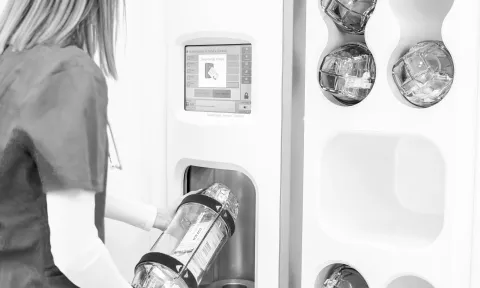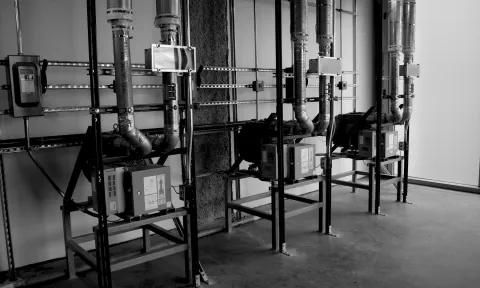A Calculated Approach To RFPs Makes All The Difference
Behind virtually every piece of hospital technology purchased is a process involving several phases of preparation. The scope of each project must be clearly defined, a budget allocated, and a gap analysis conducted with input from stakeholders and decision makers. The more effective these preliminary phases are, the more successful the process of selecting and implementing the technology will be.
The product of all this preliminary work typically comes in the form of an RFP (request for proposal), – a document that details the requirements and expectations of the hospital to be distributed to a list of selected vendors. These proposals may include the following sections:
- An overview and background of the area where the hospital technology is needed.
- The goals, both current and future, of the technology and expectations. This may include specific objectives and KPIs.
- Limitations with regards to connecting to existing interfaces, space requirements, etc.
- Service requirements covering installation, implementation, and ongoing maintenance of the system.
- A timeline that includes submission deadlines for proposals, acceptance period, and an implementation schedule of the technology.
RFPs ideally include detailed Q&A sections. This will enable a hospital to conduct a clear comparison of potential suppliers, side by side. They will be able to cut through all the hype and quickly eliminate those vendors who cannot provide sufficient responses to their questions.
As important as the RFP process is, many hospitals, due to lack of resources or pressure to move quickly, fail to put sufficient focus on their RFPs. They may not take the time up front to make sure it covers every area of need and that it is presented clearly and concisely. Moving too quickly or lacking sufficient coordination between key stakeholders can result in costly RFP mistakes, many of which cannot be corrected.
Here Are Six Common RFP Mistakes Often Made by Hospital Leaders:
- Insufficient planning. Often hospitals will miscalculate the time and effort required in a technology implementation. This can result in costly delays. Pre-planning results in more accurate estimation of cost and the work required, so that there are no financial surprises.
- Not requiring tailored responses. Because one-size does not fit all, RFPs should require vendors to tailor proposals to the hospital’s specific needs. It is important to make your expectations clear as they relate to each section of the RFP. This is especially important with pricing. You will need to have all costs clearly outlined with regards to hardware, software, interfaces. Also make sure they differentiate between upfront costs and ongoing costs.
- Lack of question clarity. Often an RFP will contain sections that don’t force clear, concise responses. This opens the door for generalized responses from vendors. A consistent RFP with clear questions will elicit clear responses which will be easier to compare.
- Not requiring contract details. Make sure that your team knows what is acceptable in a contract and what is not. Make your contract details clear and you will force a clear response. For instance, might ask vendors if a single-source agreement is required. While that may be acceptable to some hospitals, others may find it restrictive. The RFP is where these kinds of contract details can be examined.
- Not seeking financing options. Financing options can enable your hospital to acquire top quality solutions that last for years without paying 100% up front.
- Not allowing enough time for approvals. Capital purchase approvals can take time. Advanced preparation is recommended. In many cases, the process of securing these approvals should begin months before an RFP is issued.
After you receive the proposals, review them carefully. Among many things, they should:
- Align with your hospital RFP requirements. Make sure you and your team have agreed up front to areas where you are willing to negotiate and compromise.
- Showcase technical capabilities/advantages. They should be able to present tangible evidence of past implementations and why they can meet your demands more effectively than competitors.
- Highlight expertise relevant to your project. Do they specialize in the product you are seeking? Or do they generalize, covering a broad spectrum of solutions? It can make a difference.
- Separate value-add suggestions and/or enhancements. To avoid confusion and enhance response clarity, these should not be included in the Q&A response but can be annotated and included in a separate section.
- Provide clear and concise pricing information. Costs should be broken out with details. They should include volume discounts when applicable.
- Transparently outline service level commitments. This is a critical area and should be detailed with information on schedules, responsible parties, process and service guarantees.
Finally, be sure to pay close attention to the fine print. It will contain conditions and limitations that are not mentioned in the main text. Any concerns should be brought up and negotiated well before making a final decision.
The goal of the hospital RFP is to identify the most qualified provider whose product quality and performance track record most closely aligns with your needs and goals. Not every vendor will meet every requirement. But with a well-designed, carefully constructed RFP, your hospital will be rewarded with technology that checks the most important boxes. It will help you secure a solid vendor relationship with no unwanted surprises downstream. And, most importantly, it will add value to your hospital and those you serve.












